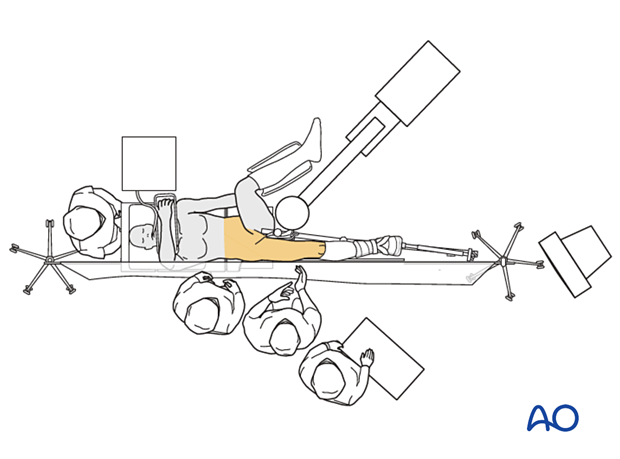Supine patient position on a fracture table
1. Indications
Supine patient positioning is used for most of the surgical management of trochanteric and femoral neck fractures. The use of a fracture table allows for reduction through traction and internal rotation of the leg. The position is well suited for excellent AP, axial, and cross-table lateral x-rays.
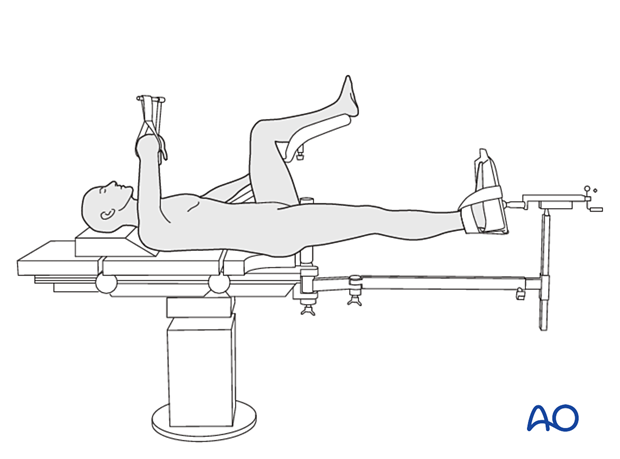
2. Preoperative preparation
Operating room personnel (ORP) need to know and confirm:
- Site and side of the fracture
- Type of operation planned
- Ensure that the surgeon has marked the operative site
- Condition of the soft tissues (fracture: open or closed)
- Implant to be used
- Patient positioning
- Details of the patient (including a signed consent form and appropriate antibiotic and thromboprophylaxis)
- Comorbidities, including allergies
3. Perioperative care for elderly hip-fracture patients
Routine perioperative care includes:
- Brief intravenous antibiotics
- VTE prophylaxis (before, during, and after surgery)
- Nutritional supplementation
- Pain management without oversedation
- Prevention of pressure sores
- Early mobilization
- Early discharge planning
- Osteoporosis evaluation and management
For more details, see the additional material on perioperative care for elderly hip fracture patients.
4. Anesthesia
This procedure is performed with the patient under general or regional anesthesia.
5. Patient positioning
Position the patient supine on a fracture table with the contralateral uninjured leg placed on a leg holder:
- Confirm the pelvis is centered on the padded perineal post
- Protect the patient’s genitalia
- Stabilize the injured leg (with boot on traction table) and secure the foot so that traction and rotation can be applied effectively
- Stabilize the well leg in a leg holder
- Adjust the patient’s torso for nailing procedures
- Elevate the ipsilateral arm in a sling
- Ensure the pelvis is level (check and level it)
Traction is applied to the leg according to the type of fracture table but generally with a shoe-traction device.

Option: Scissors position
Place the patient supine in a scissors position with the operative hip flexed and the contralateral hip extended. This allows lateral image intensifier views and helps prevent pelvic rotation around the perineal post when traction is applied.
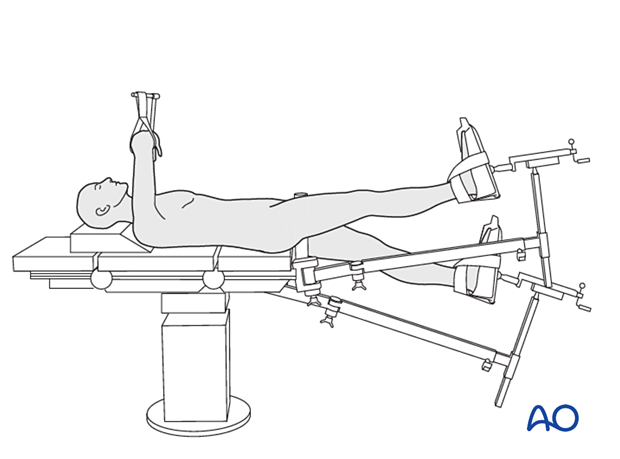
6. C-arm positioning
C-arm positioning with leg holder
With the patient and image intensifier properly positioned, AP images are easily taken.

With the uninjured leg and ipsilateral arm raised and supported, the image intensifier can be optimally positioned to take lateral and axial views.
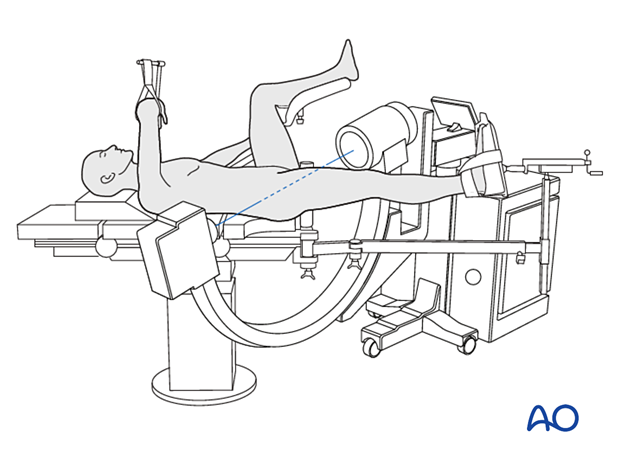
C-arm positioning with scissors position
In the scissors position, the hip on the uninjured side is extended and abducted to allow lateral imaging.
The C-arm is placed beside the uninjured hip. It is helpful to use slightly oblique lateral views to avoid superimposition of instrumentation or the patient’s opposite leg.

7. Closed reduction
For undisplaced fractures, the surgeon can proceed with skin preparation and draping and then on to exposure for fixation. If the fracture is displaced, closed reduction should be carried out at this point. If it is unsuccessful, percutaneous manipulation or formal open reduction will be necessary, and the incision must be planned appropriately.
8. Intraoperative options for VTE prophylaxis
During the operation, some centers provide VTE prophylaxis with sequential mechanical compression on the contralateral leg.
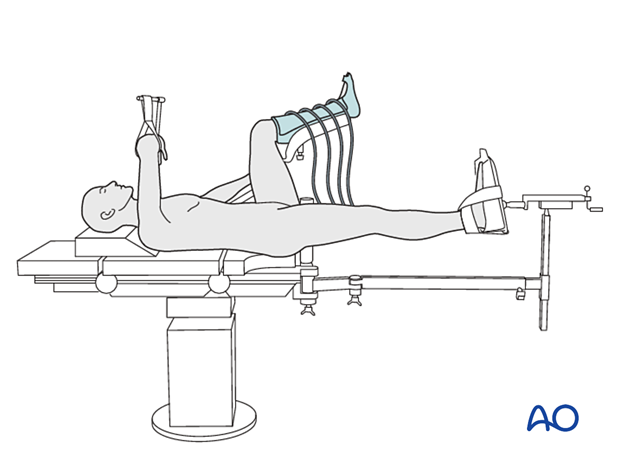
9. Skin disinfection and draping
Before starting, make sure that image intensification of the whole hip joint in two directions is not hampered in any way.
Maintain traction on the limb during preparation to avoid excessive deformity at the fracture site.
Disinfect the exposed area from well above the iliac crest to the mid-tibia with the appropriate antiseptic solution. Free drape the affected limb ...
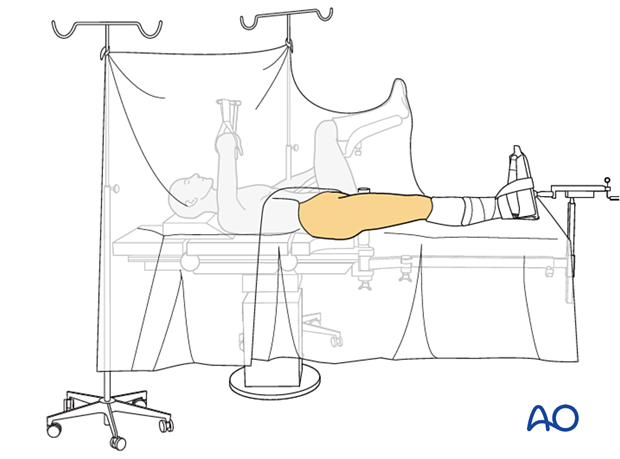
... or use a vertical isolation drape.
Ensure the adhesive portion of the drape is large enough to reach from the iliac crest to the knee joint to allow distal locking.
A single-use exclusion drape is used.
Place the image intensifier on the nonsterile side of the exclusion drape.
Drape the image intensifier.
Traditional drapes may be used. Ensure a waterproof environment for the operative site.

10. Operating room set-up
Position the operating table (if feasible) within the operating room to allow maximum space on the operating side for the surgeon, staff, and trolleys.
The surgeon, assistant, and ORP stand on the side of the injury.
Place the image intensifier display screen in full view of the surgical team and the radiographer at the foot of the table.
